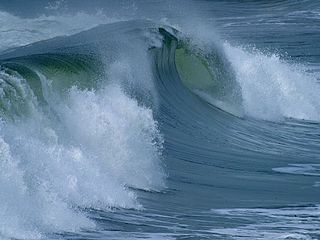Ocean Wave Energy – An Update

Yes, there are all the expected issues. The cost per megawatt of developing and implementing the plan was fantastically high, and its chief spokesperson acknowledges that the future of wave energy consists of driving down costs and achieving scale. That’s for sure. He goes on to note that the cost of building a one-megawatt coal-fired power plant would also be extremely high—also quite true.
But this analogy breaks down. Scaling wave energy means proportionately broadening the size of the field from which the energy of the waves is to be extracted, and there will be limits as to the way in which costs can be driven down. The analogy to fossil fuels fails, at least in part, due to the enormous energy- and power-density of coal, oil, and gas. This, regrettably and unavoidably, is the issue faced by virtually all forms of renewable energy. Renewables don’t exploit the energy that was concentrated from the sun’s rays over hundreds of millions of years, rather, it converts energy from the real-time environment on the surface of the earth, i.e., here and now. Because of that, all renewable energy plants that rely on the sun (solar PV, CSP, wind, biomass, and hydro) are necessarily very large physically. For example, if you want a solar photovoltaic array with nameplate capacity of one megawatt, you need to be willing to part with 7.4 acres of land.
We should also know that there are other technologies available within the overall genre of ocean wave energy. This one implements a series of buoys which, when waves pass above them, experience expansion and contraction due to the increasing and decreasing pressure, upon which hydraulic pressure is moved onshore, converted to mechanical energy, and then to electricity. There are a couple of other ways of looking at the problem that also bear fruit, and I’ll cover those at a later time.

Contrary to what was said in the article, this is not a world first.
Pelamis achieved that in 2008 off the coast of Portugal.
http://www.power-technology.com/projects/pelamis/